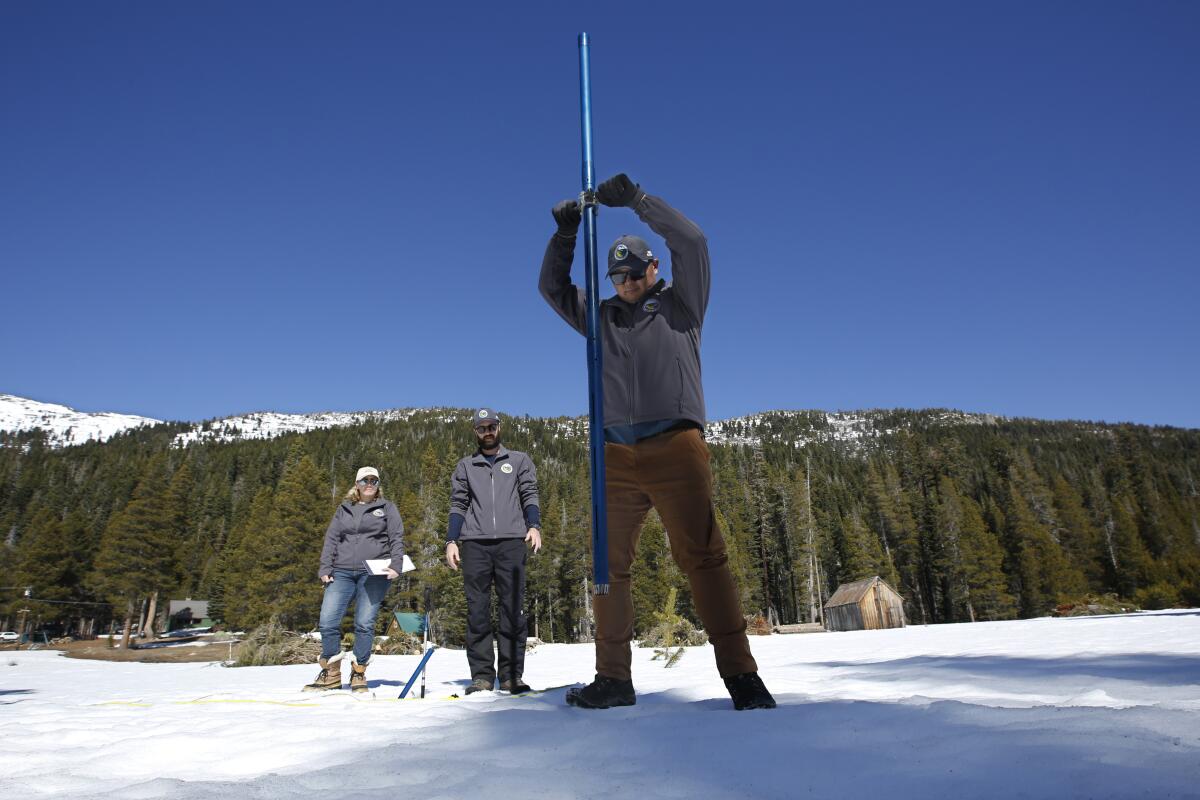California enters summer with below average snowpack; storms weren’t enough to offset dry winter

Despite a series of recent storms, California’s snowpack measures well below average for this time of year, the state Department of Water Resources announced Thursday.
The fifth and final snow survey of the water year was at Phillips Station, near Lake Tahoe, and broadcast live on Facebook. The snowpack measured 1.5 inches deep and had a snow water equivalent of 0.5 inches, or just 3% of the May average for that location.
Measurements taken from 130 electronic snow sensors throughout the state suggest that the snowpack’s water equivalent throughout California is 8.4 inches, or 37% of the May average.
An election in Southern California’s farming mecca could have ramifications across the American West.
“March and April storms brought needed snow to the Sierras, with the snowpack reaching its peak on April 9. However, those gains were not nearly enough to offset a very dry January and February,” said Sean de Guzman, chief of the DWR’s snow survey and water supply forecast section. “The last two weeks have seen increased temperatures leading to a rapid reduction of the snowpack. Snowmelt runoff into the reservoirs is forecasted to be below average.”
Typically, the snowpack supplies roughly 30% of California’s freshwater needs as it melts during early summer. A higher measurement increases the chances that California’s rivers and reservoirs will receive considerable runoff through the summer and fall. The supply provides clean drinking water and renewable energy, while feeding ecosystems throughout the state.
Last year, California had the fifth-deepest snowpack ever recorded.
Toward a more sustainable California
Get Boiling Point, our newsletter exploring climate change, energy and the environment, and become part of the conversation — and the solution.
You may occasionally receive promotional content from the Los Angeles Times.
Even though California failed to see a “March miracle” in terms of snowpack, things are looking better for some of the state’s major reservoirs. The six largest in the state currently hold between 83% and 126% of their historical averages for this time of year. Lake Shasta, California’s largest surface reservoir, sits at 81% of capacity, according to the DWR.
The state receives 90% of its rain and snowfall between early October and late April. This year, California’s precipitation varied widely from month to month.
October and November began with dry conditions, while December precipitation measured at 120% of average. Dry conditions persisted in January and February, while storms arrived in March and April. That late rainfall wasn’t enough to substantially increase the snowpack, however, and increased temperatures over the last two weeks further melted the pack.
California’s snow survey began in 1929.






